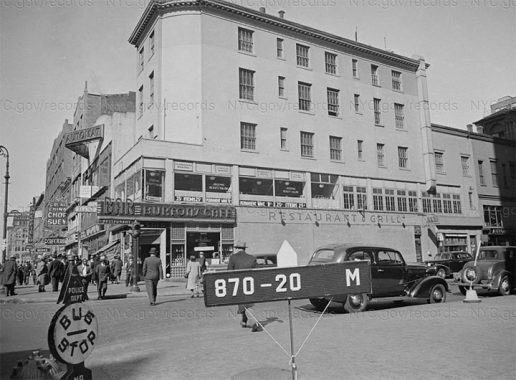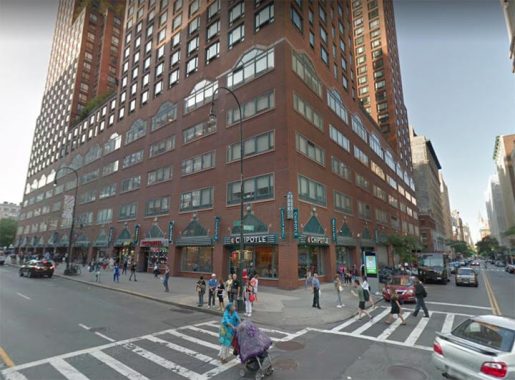The northwest corner of East 14th Street and Irving Place is currently dominated by a combined residential-commercial complex, Zeckendorf Towers, completed in 1987. The complex includes entrances to the large Union Square subway complex, which includes connections to the Broadway Line (N, Q, R, W) the Lexington Avenue line (4, 5, 6) and the Canarsie Line (L). It was named to honor developer William Zeckendorf, who passed away about a decade before the complex opened. It was built on the old footprint of the S. Klein department store, which had held down the corner of East 14th and Union Square East since 1915.
Today, this corner presents a somewhat sanitized and anodyne appearance, as franchisees such as Chipotle, GameStop, and Food Emporium occupy the ground floor of the Zeckendorf complex. Across the street, large buildings associated with New York University face East 14th.

However, the corner didn’t always look like this. I don’t currently have an H.G. Wells time machine, but the photos of NYC lamppost king Bob Mulero (The History and Design of New York City Streetlights, Past and Present, Dorrance 2017) give us a pretty good idea of what things looked like in 1983.
The corner was dominated by Glancy’s Bar, which like the Blarney Stone franchise it competed with, probably had a steam table offering corned beef sandwiches. There was a jewelry wholesaler on the second floor, and as the sign says, furnished rooms catering to the tourist trade (likely student hostelry) on the three upper floors. As you can see, this was long before massive amounts of cash entered the Union Square area and the area was still a bit rundown. Union Square itself in 1983 was overrun by panhandlers and druggies.
However, in 1983 the neighborhood was alive and thrumming with energy. Across the street Luchow’s Restaurant was wrapping up a century in business; S. Klein, the department store “on the square” had been going strong in Union Square until fairly recently; and the Academy of Music, then the Palladium, presented classical, opera and then rock and continued to do so until the 1990s.

Moving the time machine levers further back to 1940 in a Municipal Archives photo, we see Burton’s Cafe on the ground floor, a beauty salon on the second floor, and residences on the three upper floors. Note that the windows had not been altered an iota between 1940 and 1978, and by the latter year had deteriorated noticeably. On East 14th, there’s an Automat, one of a near-ubiquitous franchise that offered affordable quality food, cutting costs by eliminating servers for the most part. A neon sign indicates “chop suey” was served.
Check out the ForgottenBook, take a look at the gift shop, and as always, “comment…as you see fit.”
2/25/20
